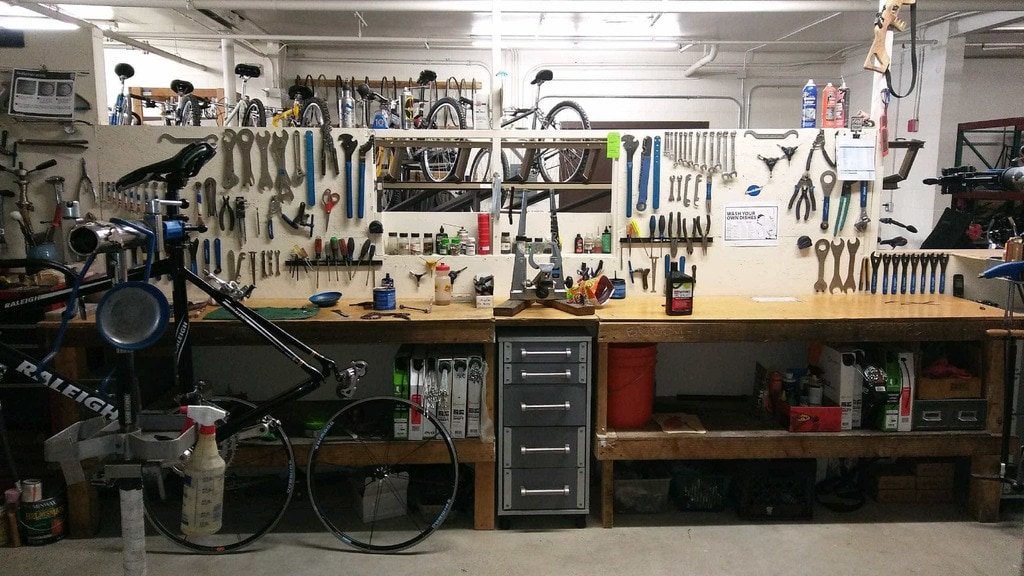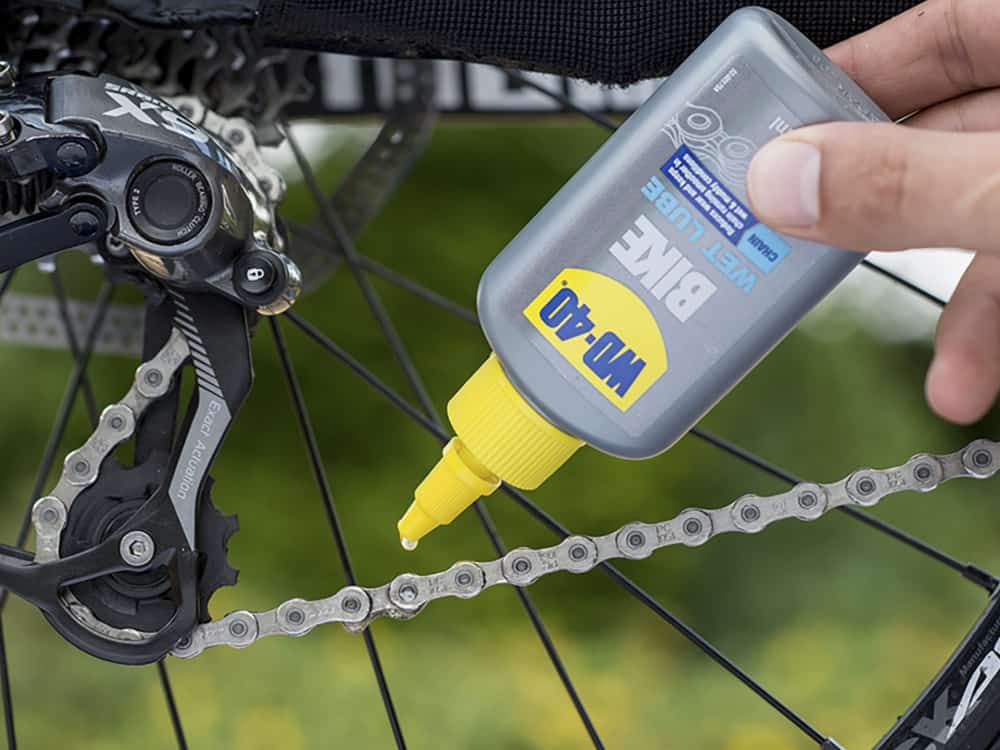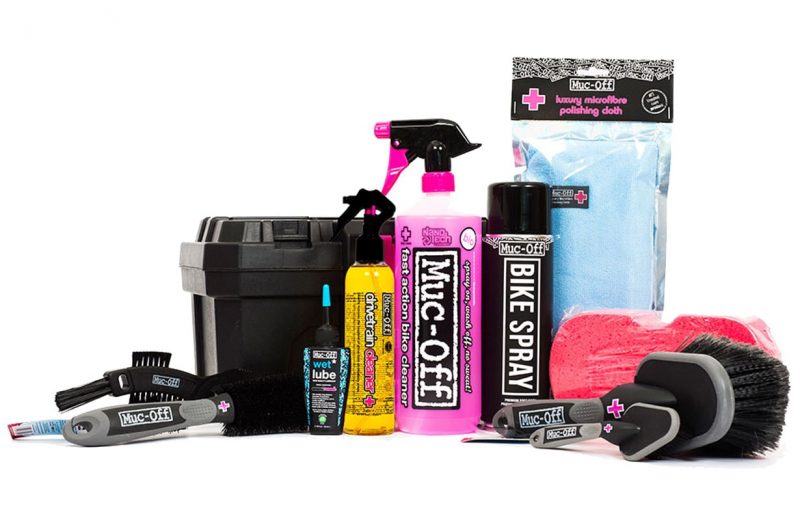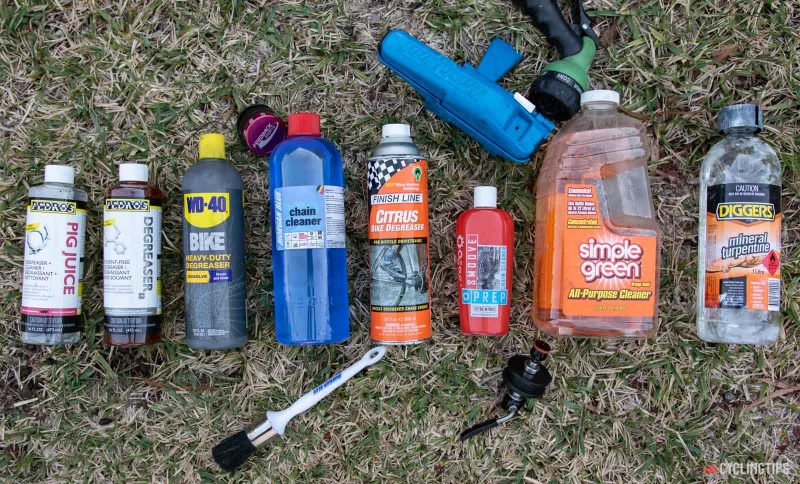Care & Maintenance, Cycling Tips -
When Should I Replace My Bike Chain?
One of the most commonly asked questions among cyclists is,
When do I replace my road bike chain?
While it sounds like a very simple and straightforward question, unfortunately, there isn’t an exact answer. There have been plenty of debates among cyclists over the years. Ask 10 cyclists and you’d probably end up with 10 different answers. If you ask your local bike shops, you might also get various answers to the same question.
A quick look at some of the leading brands and you’ll quickly notice that their recommendations aren’t consistent with each other either.
Here’s what the big brands say :
- Park Tool – 0.75% for 10s and 0.5% for 11s (and upwards) chains
- SRAM – 0.8% for 11s, 12s chains
- Shimano – 0.5% to 0.75%
- KMC – 1%
One similarity among them is to replace the chain starting at 0.5% elongation (stretch).
Let’s put this into perspective. A brand new chain will typically have around 0.25% stretch and most cyclists replace their chain anywhere between 0.5% (recommended) to 1% stretch (not recommended).
There are many factors that affect chain wear which I will discuss further below. But for now, one thing that you should know is to not replace your chains based on x km’s done.
According to Campagnolo’s Joshua Riddle,
“It is difficult to pin down an exact number to kilometres due to the fact that riders come in different weights and sizes, ride differently, shift more or less frequently, develop more or less wattage, ride on flat or hilly terrain, clean or nasty conditions, take care or leave their chain dirty… all of which create large variables in just how much wear and tear is created,”
Or SRAM,
“For chain replacement, we do not state ‘every x kms’ as this is not possible. Chain wear is based on multiple factors including maintenance (clean/lube), use conditions (water/mud/sand), user shifting patterns, and overall drivetrain condition (cassette/ chainring wear).”
Basic of A Chain Wear
So how does a chain gets stretched and wears out?
As you ride, each part of the chain experienced a huge amount of friction, which is why using the right chain lube is important. The constant rubbing between the chain and cassette/chainring causes the pitch (length) between each link to grow.
A standard pitch for a new chain is ½” (12.7mm), which makes it 1” (25.4mm) if measured from the inner to the outer plates. Chainring and cassettes are designed with this ½” pitch in mind for the chain to sit firmly at the base of the cassette/chainring.
With each contact with the cog, the inner plates move around the riveted pins. Over time, the inner plate’s bores expand which leads to some play between these pieces. And if you consider there are 110 to 114 links on a properly set up chain, the chain stretch can be noticeable.
When the chain stretches (wears out), it will sit higher up the cog/chainring teeth, causing them to also wear out quicker. If not replaced, the chain will eventually sit higher up the cog/chainring teeth and you’ll get the dreaded chain skip when you put power fo the pedals.
Bike mechanics face this almost everyday and you’ll often hear them saying,
Replace your chain before it wears out the cassette and chainrings.
These usually cost much more than a chain, so it makes sense to try to prolong their lifespan. A new $40 chain will go a long way in saving you hundreds of dollars in prolonging the lifespan of the cassette and chainrings.
What Affects Chain Wear?
The common factors that affect chain wear are :
- Riding style. A lower cadence will result in a higher wear rate due to the higher torque.
- Chain lubes. Avoid dry chain lubes if durability is the key concern. For many, wax is the gold standard.
- Riding conditions. Wet and muddy conditions are the worst conditions to ride in.
- Shifting habits. More shifting = more wear due to increased metal-to-metal contact.
- Terrains. A hillier terrain generally requires more power/strength which will wear out the chain faster.
With that said, it’s not recommended to gauge your chain wear just by tracking the mileage done. A chain that did 1,000km in the flats will have significantly lesser wear than one that did 1,000km in the mountains.
Geeky Fact : The pros have their chains replaced around the 1,000km mark in the Tour de France especially during the third week where most of the mountain stages are held.
How to Check for Chain Wear With A Chain Checker Tool
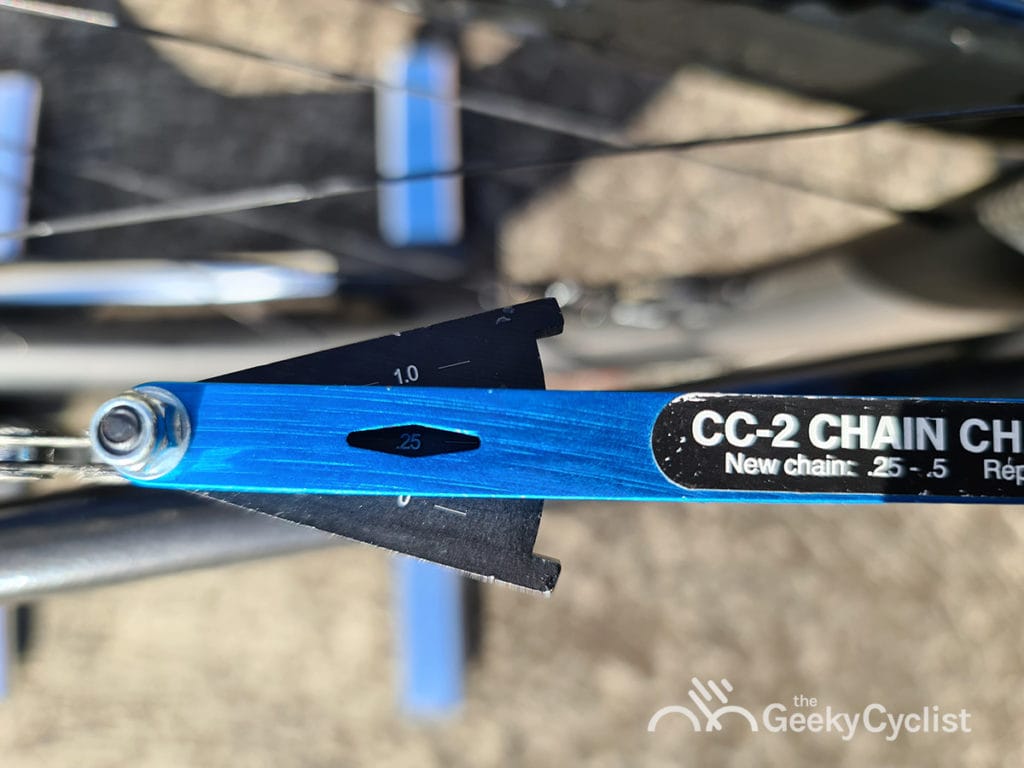
There are many tools to check chain wear today. Depending on the brand, models, and how they work, they generally cost between $10 to $40.
I’d recommend any cyclists to get one as part of the tool kit at home.
Here’s how to check for the chain wear in 5 simple steps.
- Shift to the biggest gear (biggest front ring, smallest rear cog).
- Leave the bike on the ground.
- Put the drive side (right) crankarm at 2pm position and push the pedal down. This will eliminate any slack in the chain.
- With your hand still on the pedal, use the other hand to place the chain checker tool in between the chain links.
- Take the reading on the tool. If it’s between 0.5 to 0.75 for an 11s, 12s, or 13s chain, it’s time to replace it. If it’s above 0.75, definitely replace it as soon as possible. A new chain usually measures 0.25.
How to Check for Chain Wear Without a Tool
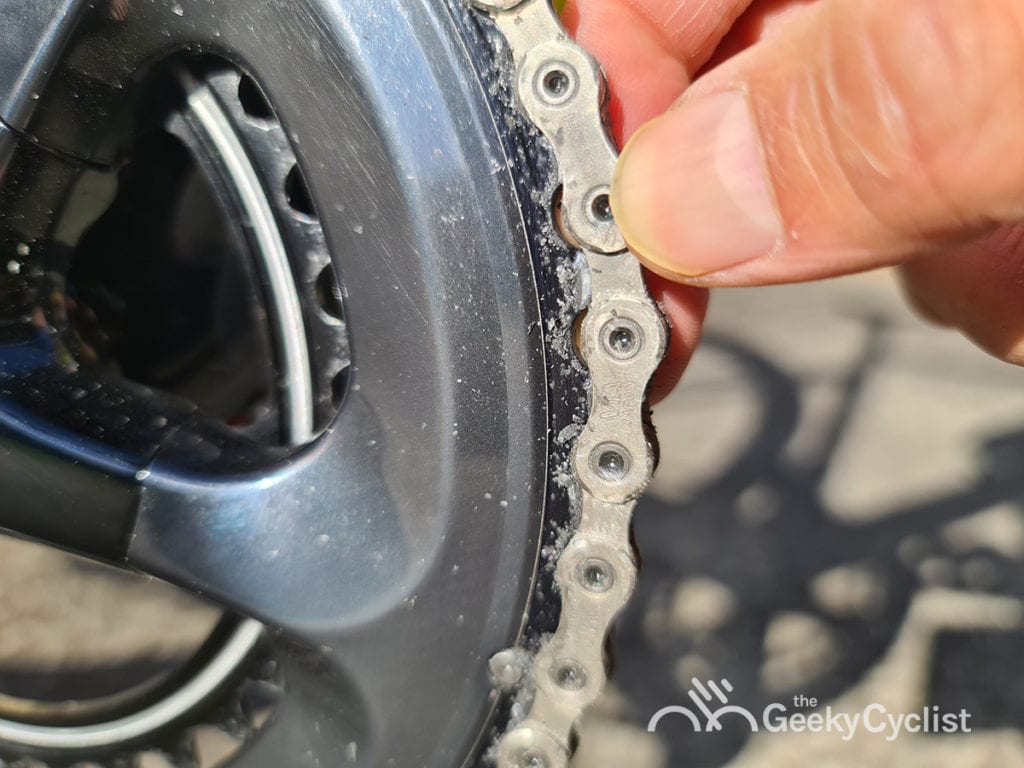
If tools are not your cup of tea, there are also tool-free methods. But keep in mind that these aren’t as accurate and quantifiable. At most, they will give you a rough indication if the chain is starting to wear out.
Here are 5 simple steps to measure the chain wear without using a tool.
- Shift to the biggest gear (biggest front ring, smallest rear cog)
- Leave the bike on the ground.
- Try to pull the chain at around the 3 to 5pm position.
- The amount of lift indicates the wear rate.
- A new chain will not lift off the chainring. If you’re able to see 50% or more of the chainring teeth after lifting the chain, it’s time for a new chain.
Author Recommended Reads

